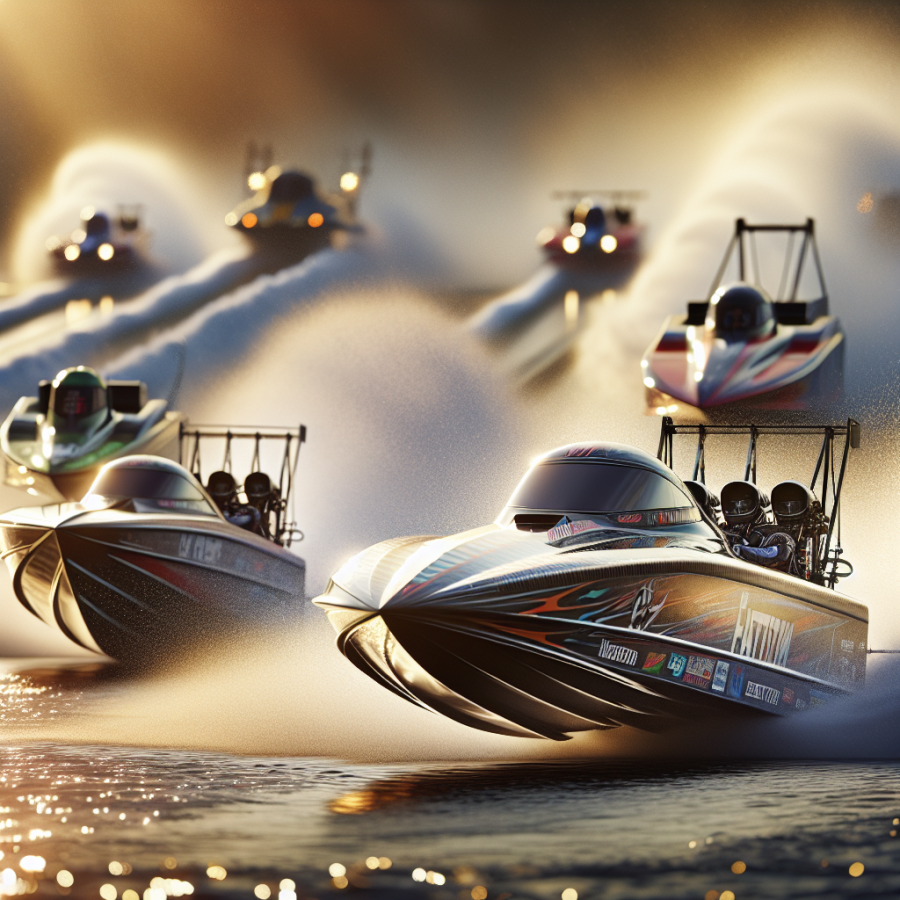Exhilarating Speeds and Cutting-Edge Boats: The Appeal of Drag Boat Racing
The world of drag boat racing is one that pulsates with the kind of thrills and excitement that can only be found in the harmony between high speeds, raw power, and the characteristic allure of competitive sports. One of the essential elements fueling the surge in popularity of this aquatic adrenaline rush is the engineering masterpiece behind these vessels – the cutting-edge boats that skim the surface of the water at heart-stopping speeds.
In the realm of drag boat racing, the power-to-weight ratio is a critical factor. Manufacturers and teams spend countless hours designing and perfecting lightweight but robust hulls built from advanced materials such as carbon fiber, Kevlar, and aerospace-grade aluminum. These materials not only provide the strength necessary to withstand the stresses of high-velocity sprints but also keep the boats as light as possible for optimum performance.
The engines used in these water-bound rockets are nothing short of engineering marvels. High-performance V8 engines, often supercharged or turbocharged, are the norm here, capable of propelling these vessels to speeds in excess of 250 miles per hour in just a quarter-mile stretch. That's comparable to the acceleration you might experience in top-tier supercars, but with the added complexity of performing on an unpredictable liquid surface.
Beyond the sheer power, technological advancements in propeller design and hull aerodynamics play a significant role in keeping these boats not only fast but also safe and stable at dizzying speeds. The boats' design aims to achieve minimal drag while ensuring that they glide across the water with precision and control. This is no easy feat, given that the smallest miscalculation can lead to lift-off, barrel rolls, and potentially catastrophic accidents.
Moreover, the cockpits of these high-speed vessels come equipped with the latest in safety innovations. Capsules are often reinforced to protect the driver in the event of a crash, and quick-escape systems are implemented to allow drivers to exit the craft swiftly should they need to make an underwater escape.
Drag boat racing also has a unique appeal due to its setting. Unlike traditional motorsport races that take place on tarred tracks encased with bleachers, drag boat racing is a dynamic event that uses rivers and lakes as its stage. Spectators often gather in the natural amphitheaters provided by riverbanks and lakesides, relishing the connection to nature while watching the drama unfold at breakneck speeds on the water.
Read also:
Exploring the Wehrle Golf Dome: A Golfer's Indoor Paradise
Safety Measures and Environmental Considerations in the Adrenaline-Fueled World of Drag Boat Racing
The surge of drag boat racing brings with it the exhilarating experience of slicing through water at breakneck speeds. However, with great speed comes great responsibility, particularly in terms of safety and environmental care.
Safety Measures:
Safety in drag boat racing is paramount and encompasses a range of considerations from the construction of the boats to the training of the pilots. The boats themselves are engineered with safety in mind, often constructed using lightweight, yet robust materials meant to withstand high levels of stress while maintaining the integrity of the hull.
Equally important is the personal protective gear required for all participants. Racers must wear specialized life vests that can withstand the impacts associated with high-speed water crashes. Helmets are designed to be waterproof and resistant to impacts, and they often include communication systems for racers to maintain contact with their teams.
On-board safety measures include easy-to-access fire suppression systems and emergency shutoffs, which allow for immediate response in case of fire or other urgent situations. Furthermore, capsule boats, which feature enclosed cockpits, have escape hatches that can be quickly opened underwater by safety divers in the event of a capsizing.
Performance is not the only concern; rigorous training and certification are essential. Pilots must complete thorough training programs and demonstrate their ability to handle high-speed watercraft safely before being allowed to compete. Additionally, race organizers ensure that medical personnel and rescue divers are always on-site during events, ready to respond to emergencies at a moment's notice.
Environmental Considerations:
Drag boat racing also has an environmental impact that cannot be ignored. Race organizers are ever more cognizant of the need to protect the waterways and surrounding areas where races take place. Measures are implemented to minimize pollution, such as using environmentally friendly fuels when available and enforcing strict guidelines for the handling of any hazardous materials.
Noise pollution is yet another concern, considering the powerful engines used in drag boat racing. Efforts such as scheduling races during less disruptive times and ensuring local wildlife is not unduly impacted are considered whenever a race is organized.
The impact on water bodies is also a focus of environmental conservation efforts in drag boat racing. This involves careful planning of racecourses to avoid sensitive ecosystems and employing best practices to prevent any spillage of oils or fuels into the water.
Moreover, there is a push for cleaner technologies within the sport. Innovations such as electric propulsion systems are beginning to make their way onto the drag boat racing scene, promising a future of high-adrenaline racing with a smaller environmental footprint.




